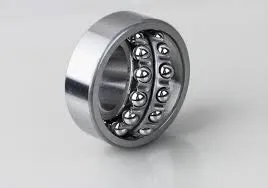
Dec . 20, 2024 19:32 Back to list
Understanding the Structure and Function of Cylindrical Roller Bearings in Machinery
Understanding Cylindrical Roller Bearings A Comprehensive Overview
Cylindrical roller bearings are one of the essential types of rolling-element bearings. They consist of cylindrical rollers that allow the bearing to handle both radial and axial loads, providing a fundamental solution for various mechanical applications. In this article, we will explore the design, functioning, advantages, and applications of cylindrical roller bearings, with a focus on their structural diagram.
Structure and Design
At the core of a cylindrical roller bearing is its unique structure, which comprises an inner ring, an outer ring, and a set of cylindrical rollers. The rollers are positioned between the inner and outer rings in such a way that they facilitate the transmission of loads while minimizing friction. The cylindrical shape of the rollers offers a larger contact area with the raceway, which is the groove on the inner and outer rings where the rollers sit. This larger contact area results in higher load-bearing capacities than other bearing types, such as ball bearings.
The geometric arrangement of cylindrical roller bearings can vary. They can be single-row, double-row, or even multi-row bearings, each designed to cater to different loading requirements. Single-row cylindrical roller bearings are commonly used in applications with radial loads, while double-row designs can accommodate both radial and axial loads, increasing overall bearing capacity.
Functioning Principles
Cylindrical roller bearings operate based on rolling friction rather than sliding friction, which significantly reduces wear and heat generation. The rollers move in a manner similar to that of gears, rolling between the surface of the inner and outer rings. When an external force is applied to the bearing, the cylindrical rollers translate this load to the raceways, allowing the inner ring to rotate. The design ensures smooth operation, even under heavy loads, which is critical in various industrial applications.
Another essential feature of cylindrical roller bearings is their ability to handle misalignment. Many designs incorporate features that allow for slight angular misalignments, which can occur in machinery. This adaptability makes them suitable for applications where precise alignment cannot be guaranteed.
Advantages
Cylindrical roller bearings offer several distinct advantages
cylindrical roller bearing diagram

2. Reduced Friction The rolling motion decreases friction, enhancing energy efficiency and prolonging the lifespan of the bearing.
3. Durability Due to their robust construction, cylindrical roller bearings can withstand harsh conditions, making them ideal for heavy-duty applications.
4. Versatility Their design allows them to be used in various settings, from automotive and aerospace to industrial machinery and electric motors.
5. Maintenance Many cylindrical roller bearings are designed to be maintenance-free, as they come pre-lubricated, reducing the frequency of maintenance interventions.
Applications
Cylindrical roller bearings are utilized across numerous industries, primarily due to their robust performance and reliability. Common applications include
- Automotive Industry In engines and transmissions, these bearings support various mechanical parts under significant loads and speeds. - Aerospace Used in aircraft engines and landing gears, they provide the necessary support in high-load and high-speed conditions. - Industrial Machinery Found in conveyor systems, gearboxes, and pumps, cylindrical roller bearings facilitate efficient operation in various manufacturing processes. - Electric Motors Their ability to handle axial loads makes them suitable for electric motor applications where space is often limited.
Conclusion
Cylindrical roller bearings play a vital role in modern machinery and various industries. Their unique design allows them to handle significant loads with reduced friction, making them an economical choice for many applications. As technology advances and demands increase, the importance of these bearings will undoubtedly continue to grow, driving innovation and efficiency in mechanical design. With a thorough understanding of their structure and functionality, engineers and designers can better integrate cylindrical roller bearings into their projects, ensuring optimal performance and reliability.
Latest news
-
Premium Deep Groove Ball Bearings | High Speed & Reliability
NewsAug.29,2025
-
Durable Scaffolding Clamps - Secure & Reliable Tube Connectors
NewsAug.28,2025
-
Common Failures in Thrust Ball Bearings and Solutions
NewsAug.22,2025
-
How Tapered Roller Bearings Can Take Shock Loads
NewsAug.22,2025
-
Angular Bearings in High-Precision Spindles
NewsAug.22,2025
-
The Impact of Misalignment on Cylindrical Roller Bearing Performance
NewsAug.22,2025
